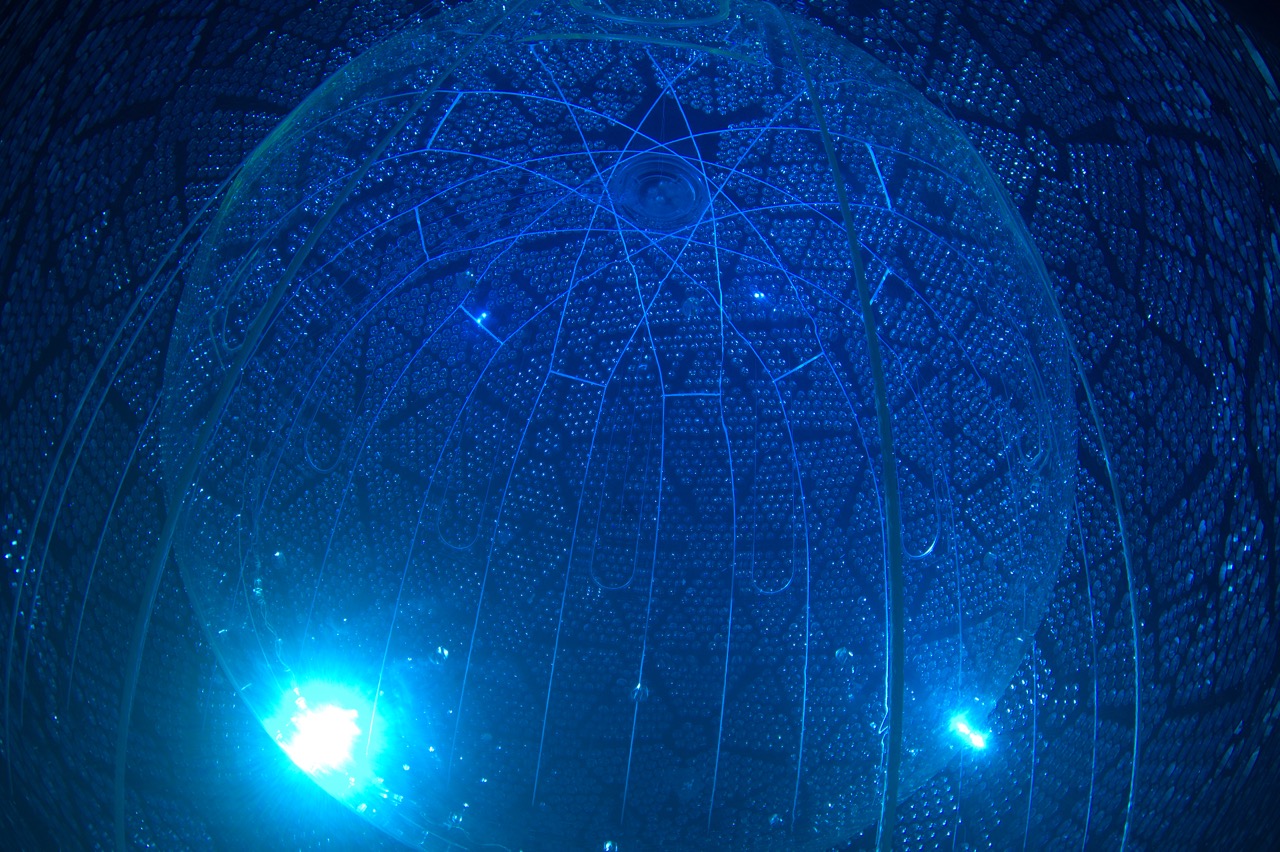
SNO+ release new results
The SNO+ experiment had a busy 2018, publishing multiple papers including a Solar Neutrino Measurement and a Nucleon Decay in Water results paper.
These papers are available here:
SNO+ is reporting on a solar neutrino measurement taken during the water phase of the experiment. The experiment has re-measured the flux of solar neutrinos similar to what was done in the SNO experiment. The measurement demonstrates extremely low overall background at high energies, which is made possible by the depth of SNOLAB and the careful construction of the detector. The experiment has measured individual components of the residual backgrounds in the detector and found them to be at acceptable levels for continued phases of the experiment. SNO+ has started the next steps in phase 2 with the addition of a scintillator, Linear Alkyl Benzene (LAB) to the detector which will allow for lower-energy neutrino detection.
In particle physics, a nucleon is either a proton or a neutron. Nucleon decay is a hypothetical form of particle decay in which a proton or neutron decays into a lighter subatomic particle. Despite significant experimental effort, nucleon decay has never been observed, which may be because it takes hundreds of thousands of years (extremely rare) or because nucleons are stable. The SNO+ experiment carried out the world’s most sensitive search for partciular nucleon decays, but didn’t see these processes occur. No experiment has ever seen these decays which means, they can then set limits on how rare these processes are. This is then a measure of the stability of the nucleon. Other options to continue the search experiments might measure longer lifetimes, or look for other decay modes.The SNO experiment was not able to see these decay modes because they used heavy water and the signal for solar neutrinos in heavy water was as the same energy, and therefore obscured any chance of signal from nucleon decay.Current Grand Unified Theories (GUTs) say that proton decay SHOULD happen, so it’s curious that an experiment has not seen it yet. It means that likely, the GUTs are wrong and we need new theories, and then new experiments to test those theories (which is still an exciting result for physicists!).
Collaborators around the world are celebrating the achievements and looking forward to another successful year as they continue to fill with linear alkyl benzene for the next phase of the experiment.
SNO+ is based at SNOLAB in Sudbury, ON and is led by Queen’s University Researcher, Dr. Mark Chen. It is an international collaboration with over 120 members from 23 institutions in 6 countries. The experiment will have 780 tonnes of liquid scintillator when full with 3.9 tonnes of Te (0.5% by mass) added for a low-background and high-isotope-mass search for neutrino-less double beta decay. SNO+ uses the acrylic vessel and PMT array of the SNO detector with several experimental upgrades and necessary adaptations to fill with liquid scintillator.
Low backgrounds and a low energy threshold allow SNO+ to have other physics topics in its program including; neutrinoless double beta decay, geo- and reactor neutrinos, supernova neurinos and solar neutrinos.
Please check out this special feature below on SNO+ post-doctoral fellow, Dr. Cindy Lin.
For more information, please contact
Samantha Kuula
Senior Communication Officer
SNOLAB
Samantha.Kuula@snolab.ca
(705) 692-7000 x2222